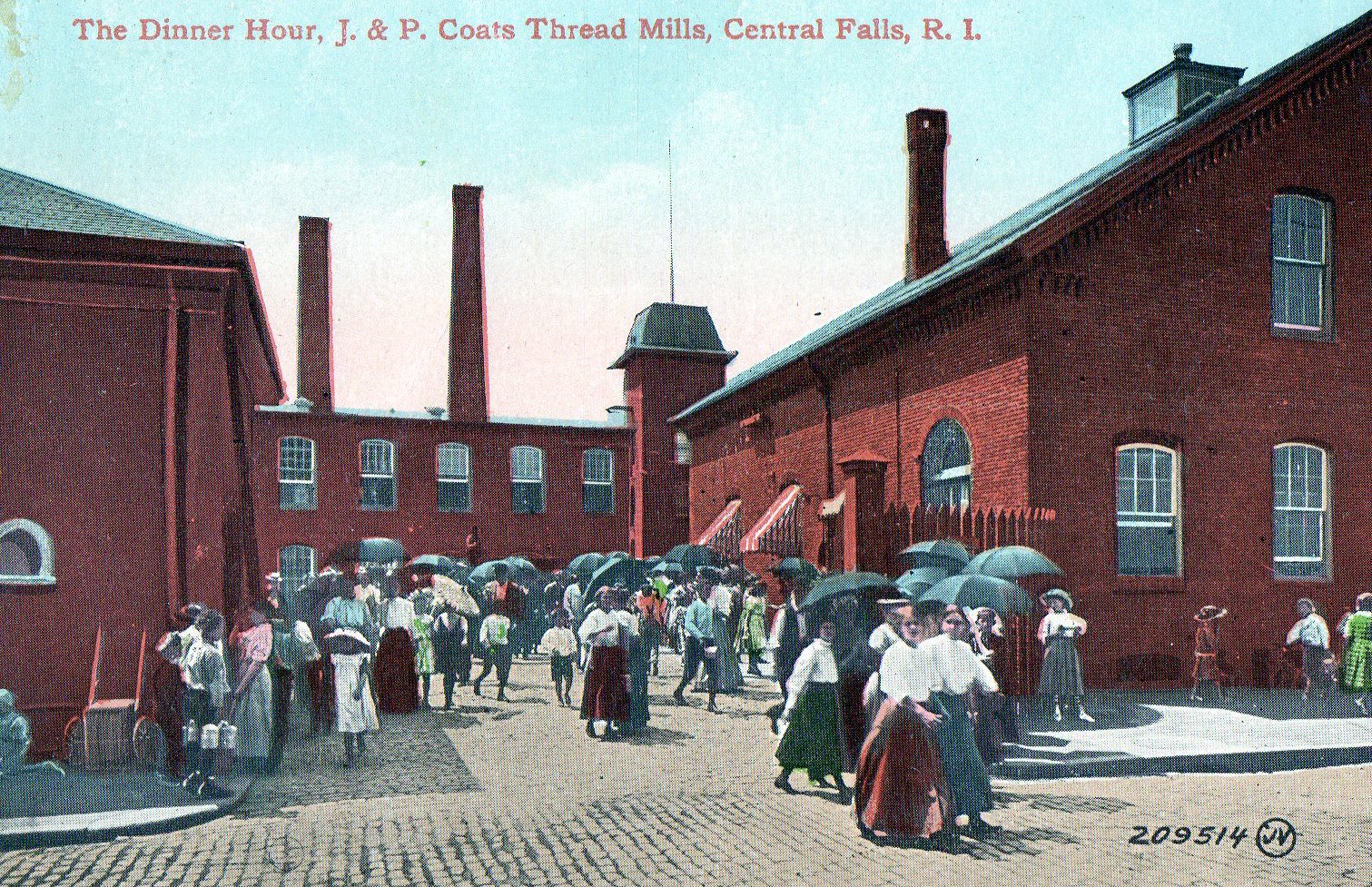Thread Mills, The History of Paisley's Thread Mills, Mid-Nineteenth-Century Development
Mid-Nineteenth-Century Development
One of the most significant events in the growth of the international thread trade in the nineteenth century was the advent of the mechanical sewing machine. This was invented in 1846 by Elias Howe, but at this time, the three-cord thread that was being produced for hand sewing was unsuitable for the new machine. This would change twenty years later after George Clark developed a six-cord thread with a finish that was soft enough to be used in the sewing machine. Clark called this ‘Our New Thread’, abbreviated to O.N.T. which would become the trademark for the Clark firm. The invention of a thread that could be used in sewing machines revolutionised the thread industry, greatly increasing demand and, as a result, the profits to be made. Both Clarks and Coats would see their businesses and their rivalry grow as the nineteenth century drew to a close, while their collective empires spanned the USA, India, Europe, Russia, and the Baltic regions.

Workers outside a Coats mill in Rhode Island, USA, during the nineteenth century
In the 1870s the Clarks mills were renamed the Anchor mills, and this period would see the company buy over an increasing number of businesses in order to consolidate its position of strength. Both Clarks and Coats would incorporate their businesses during this period, increasing their capital base while cementing their operations overseas, with Russia being a particular point of interest for Clark and Co Ltd by the end of the nineteenth century. This period of expansion overseas was mirrored by the transformation of the existing sites in both Seedhill Road and Ferguslie. The mile end mill (1898) was the last great mill to be built in Paisley, and represents the end point of a three-decade period of expansion by both Paisley families. Prior to this, the Clarks had constructed the Atlantic (1872) and Pacific (1878) mills on Seedhill road to carry our spinning and twisting. These were large, five-storey buildings, and while their size reflected the growth of the Clarks business, their names were a reminder of the truly global reach of this Paisley business. Together with the domestic finishing mill (1886) this part of the town was dominated by a whole line of huge buildings that were crammed into an area stretching no more than a few hundred yards.
In Ferguslie, the Coats family was also witnessing a rapid expansion of its business in the middle-to-late nineteenth-century. The demand created not only a range of new Victorian mills, but also influenced migration patterns, as people flocked into the town in search of work. This had been happening since the 18th century, however, by the middle of the nineteenth century more people began to arrive from the Highlands and Ireland. In the 1860s, many of those who were not engaged in domestic service would find work in the local bleachworks that were closely connected to thread production. By the later nineteenth century the mills themselves were beginning to become dominated by migrant workers. Census figures show that in 1891 less than 39 per cent of workers in the mills were born in Paisley, the rest coming mostly from the Highlands and Ireland. In Ferguslie, as at Anchor, these workers would often be in high demand. The Ferguslie site had been continually developed since 1826, but by the second half of the nineteenth-century the buildings became larger, as they had done at Anchor. The Ferguslie site was dominated by the outstanding Number 1 mill (1887), which was designed in French Renaissance style. However a number of other large mills were built by the Coats business at this time, including the large Number 8 mill (1890), while the Half-Timer’s school (1887) was a highly ornate example of the paternalistic side of the Baptist Coats family. At this time, business competition between both firms was fierce, with each being forced to continually lower prices in order to compete. This could not go on, and eventually, a compromise was reached.